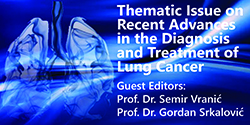Methicillin-resistant Staphylococcus aureus in North-east Croatia
DOI:
https://doi.org/10.5644/ama2006-124.122Keywords:
Staphylococcus aureus, MRSA, Healthcare-associated infectionAbstract
Objective. The aim of this 5-year study was to determine the frequency and antibiotic susceptibility of methicillin-resistant Staphylococcus aureus (MRSA)-related infections at Osijek Clinical Hospital. Materials and methods. A total of 1987 staphylococci-infected clinical isolates were collected and analysed at the Microbiology Department of the Public Health Institute of Osijek-Baranja County. Results. Be- tween 2008 and 2012, the average rate of MRSA-related infections in staphylococci-infected patients was 27.4%. The proportion of MRSA- related infections on all Staphylococcus aureus (S. aureus) isolates from clinical specimens showed a decreasing trend, from 32.6% in 2008 to 25.5% in 2012. MRSA-related infections were mostly detected in wound swabs (50.6%) and aspirates (28.8%) of patients hospitalized in the surgical (49.8%) and intensive care units (27.9%). MRSA-relat- ed infection showed an increase compared to S. aureus-infections in samples of wounds and aspirates in 2011 and 2012 (57.9%/34.9% and 35.2%/16.3%, respectively). The majority of strains of MRSA-related infections were resistant to several antibiotics, including erythromycin and clindamycin, where susceptibility were less than 10%. All MRSA isolates were susceptible to vancomycin, teicoplanin and linezolid. Therefore, antibiotic therapies for MRSA infections include vancomycin, teicoplanin and linezolid, but microbiological diagnostics need to be performed in order to know when the use of glycopeptides and oxazolidinones is indicated. Conclusion. Our results suggest that appropriate prevention measures, combined with the more rational use of antibiotics are crucial to reduce the spread of MRSA-related infection in healthcare settings. Further monitoring is necessary of the incidence and antibiotic susceptibility of MRSA-related infections in our community.






